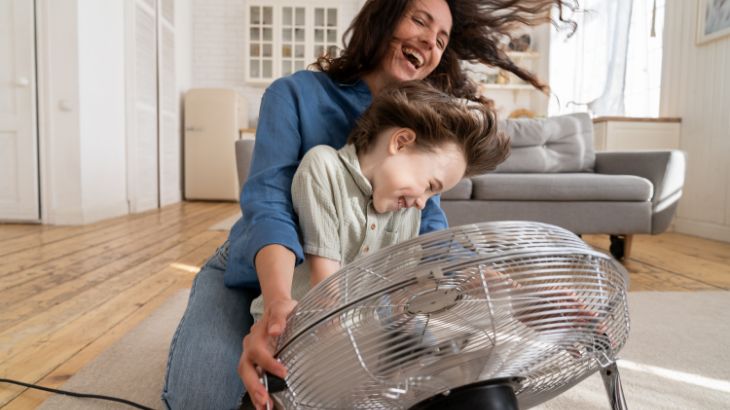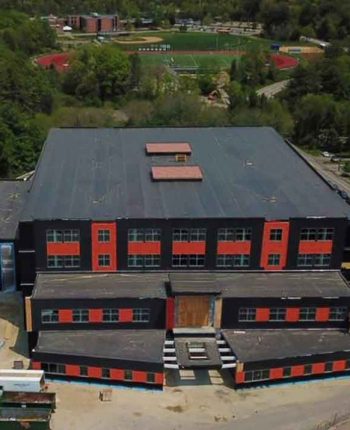
Go With the Flow: Circulating Fans Save Energy
Key Points
- Air circulation saves energy year-round by reducing the need for space heating and cooling.
- In summer, moving air creates a wind chill effect, making building occupants feel more comfortable.
- In winter, ceiling fans save on heating costs by creating a more uniform building temperature.
Circulating air fans in commercial buildings range from small, desk units for locally controlled airflow, to large, high-volume fans suspended from the ceiling. These units do a lot more than just move air around; they can improve productivity and help to reduce your energy costs.
Temperature extremes and poor humidity control make people feel sluggish and less focused; more prone to costly mistakes and on-the-job injuries. Space heating and cooling helps, but it can be costly and has limited effectiveness in many applications. Appropriate air circulation helps improve occupant comfort and saves energy year-round.
Summer cooling
Air circulation does not cool the air; it cools building occupants by directly enhancing evaporation from the skin. Nearly everyone has enjoyed the relief of a cool breeze on a hot, humid day. The air movement created by circulating fans creates that same wind chill effect, making building occupants feel more comfortable, even in spaces already cooled by air conditioning or natural ventilation. This can reduce the need for air conditioning, lowering summer energy bills. Large ceiling fans are particularly effective in circulating air throughout a space.
Winter heating
In winter, warm air rises to the ceiling where it remains and eventually leaks out of the roof, while colder air stays close the floor near thermostats, causing the heating system to work harder. In facilities with high ceilings, this can mean a significant temperature variation between the floor and ceiling level. For example, in a warehouse with a 30-foot ceiling, a 20°F temperature difference would not be unusual on cold winter days.
By circulating the indoor air to create a more uniform temperature, heat loss through the roof is reduced and the temperature at floor level remains at a more comfortable level. This reduces the need for heating and helps make the work atmosphere more productive.
What are the savings?
In many circumstances, using a ceiling fan will allow you to adjust building temperatures by 4 to 8 degrees with no reduction in comfort to building occupants. Accounting for fan energy consumption, this would still result in a 10 to 15 percent reduction in annual heating and cooling costs, depending on facility size and type.
Getting the most from your heating and cooling system
Proper heating and cooling maintenance and operating practices, combined with circulating fans, can reduce your energy costs substantially.
- Conduct an audit. An audit is a detailed evaluation of the condition and efficiency of heating, ventilation and air conditioning (HVAC) equipment. The audit will update you on the condition of your system and provide suggestions for ways to improve performance.
- Inspect and maintain. Make sure your HVAC system is inspected each year by a qualified professional. Regular preventive maintenance practices include changing filters, cleaning system components and keeping refrigerant charged at the recommended level.
- Maintain building envelope. Regularly seal air leaks in walls, roof, doors and windows. Make sure your facility is insulated to recommended levels. Check with your local building inspector for code requirements in your area. A tight building envelope will substantially reduce heating and cooling costs and make your building more comfortable.
- Upgrade for energy efficiency. Consider replacing HVAC systems that are 20 years old or more. Energy cost savings, combined with federal, state or local incentives, can provide a reasonable payback. The decision to replace, however, will depend on maintenance costs and the condition of your current system.


